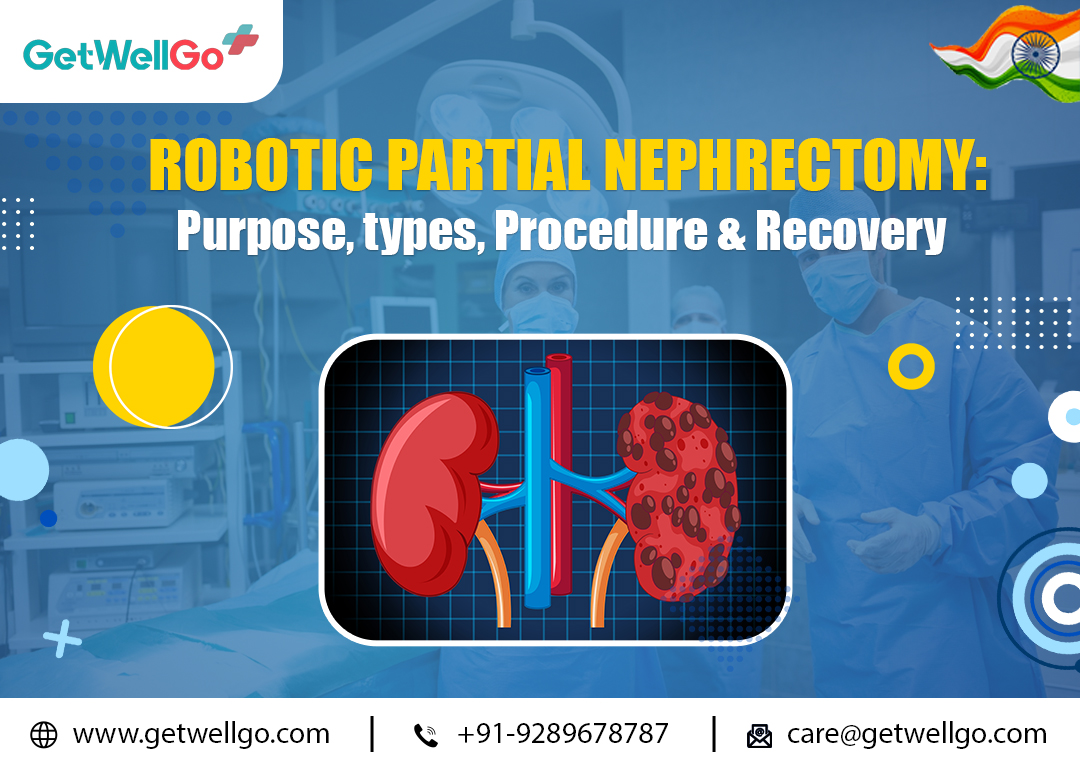
Safe, Reliable, and Affordable Central Venous Access for International Patients
Safe, reliable, and affordable central venous access with GetWellGo. Trusted care for international patients seeking world-class medical support.
Read MoreDiscover robotic partial nephrectomy: its purpose, types, procedure, and recovery options. GetWellGo offers world-class care for international patients.

Category
UrologyPublished By
GetWellGo TeamUpdated on
24-Apr-2025A Partial Nephrectomy is a surgery in which only the ill or damaged segment of a kidney is resected and the normal segment is left behind. It's usually performed to exit with a kidney tumor or a small section of the kidney affected by disease but retain as much healthy kidney function as possible.
This is a brief summary:
Purpose: Mainly for treating small kidney tumors (especially those under 4 cm), localized cancers, or benign tumors and maintaining the rest of the kidney.
Types:
Benefits:
Robotic Partial Nephrectomy is a minimally invasive procedure in which a surgeon performs a tumor or diseased tissue removal from the kidney using a robotic system (such as the da Vinci Surgical System), while preserving as much healthy kidney as possible.
Here's the easy explanation:
How it works:
Why it's best:
Who's it best for:
Activity
Wound Care
Diet
Pain Control
Work and Driving
Follow-Up
Anaesthesia and Positioning
Making Small Incisions
Inserting Robotic Instruments
Through these incisions:
Locating the Tumor
Clamping the Blood Supply (if required)
To limit bleeding:
Removing the Tumor
The surgeon employs robotic devices to:
Repairing the Kidney
Following removal of the tumor:
Removing Tools and Closing Incisions
GetWellGo is regarded as a leading supplier of healthcare services. We help our foreign clients choose the best treatment locations that suit their needs both financially and medically.
We offer:

Safe, reliable, and affordable central venous access with GetWellGo. Trusted care for international patients seeking world-class medical support.
Read More
GetWellGo connects international patients to top hospitals for bilateral hydrocele surgery at reduced costs, ensuring quality care in trusted destinations worldwide.
Read More
GetWellGo connects you to expert doctors for Anal Dilatation Surgery abroad—safe, effective, and affordable care for international patients.
Read More
Experience advanced and safe Percutaneous Nephrolithotomy in India for kidney stone removal. Get expert care, affordable treatment, and seamless medical travel support for global patients.
Read More
Retrograde Pyelogram in India offers precise urinary tract imaging using advanced technology. Get accurate diagnosis, expert care, and affordable treatment for kidney and ureter conditions.
Read More
Travel to India for suprapubic cystostomy with expert urologists. Get advanced, safe, and affordable treatment at top hospitals, tailored for international patients seeking quality care.
Read More
GetWellGo connects international patients to top bladder pain syndrome treatments in India, offering advanced care and trusted medical experts.
Read More
Travel to India for UTI treatment with GetWellGo. Connect with expert doctors and trusted hospitals offering safe, affordable care for international patients.
Read More
GetWellGo connects patients worldwide to India’s best hematuria treatments—affordable, trusted, and expert care for faster healing with confidence.
Read More.png)
GetWellGo connects international patients to India’s leading surgeons for enlarged prostate surgery. World-class care, advanced facilities & cost savings.
Read More
Explore advanced and affordable chronic kidney disease (CKD) treatment in India for international patients, with expert nephrologists and world-class dialysis and transplant care.
Read More
Affordable gallbladder surgery in India for global patients with GetWellGo. Quality care, seamless travel, and expert medical guidance throughout.
Read MoreFill the form below to get in touch with our experts.
Please fill in your details below and our experts will get back to you.